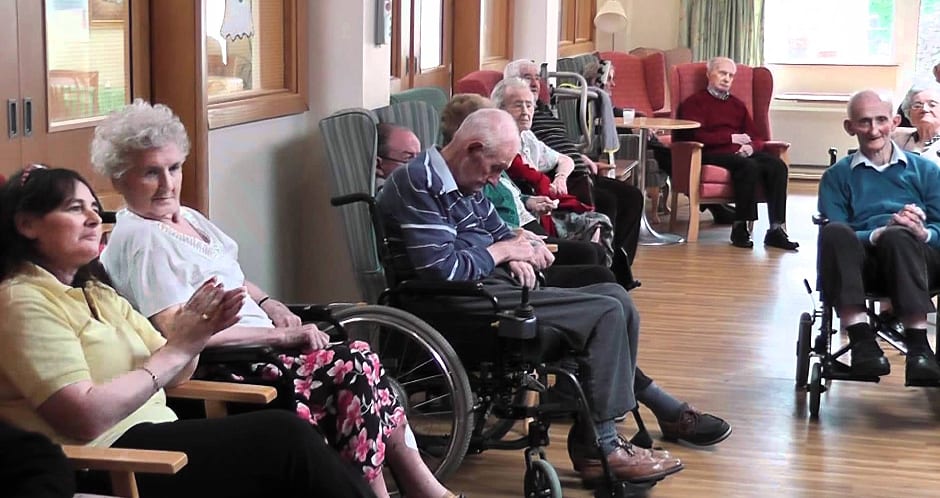
You’ve seen the brochures and driven past the building; but the only way to really know whether an aged care facility might be the right one for you is to look inside.
First impressions count for a lot but it is also important to get an understanding of how they operate to know whether it is somewhere you or someone you know could live and be cared for.
For the sake of this article, we will assume that the personal care given to residents is as good or better than expected.
What an individual or their family think of an aged care facility can depend very much on who is conducting the tour of the place. A friendly and interested reception by the facility is a good start, but not always a given.
Some facilities conduct regular tours, say once a month; others allow tours one-on-one. Sometimes tours are given by the facility manager. Other times it may be the nearest carer.
The person who runs those tours can have an enormous impact on how you view a place and whether you are comfortable asking all the questions you want.
• The cleanliness of the common areas and resident’s rooms
• How the staff interact with the residents
• Whether you notice any smell
• What the residents are doing – are they engaged in activities or mostly in their rooms?
• Do you think the residents look or sound happy?
• Do you like the feeling of the place?
New facilities are being built, and these can make others look a little…’old’.
But is old a bad thing if it means the home is smaller with fewer residents and more homely?
Older residences usually have more established gardens. They may also be located in inner city areas rather than out in the suburbs where family and friends fear to tread.
Newer facilities tend to be built in outer suburbs because that is where the land is available. They are also likely to be bigger and grander.
Where an older facility may have had 60 residents, many newer facilities will have 150 plus. The way providers are making them seem smaller is to divide the buildings into clusters or communities, of say 40.
Instead of a big dining room for all the residents there will smaller, more intimate settings. This has its appeal.
Food is a big part of everyone’s life and everyone likes good food. It is also the first thing many residents complain about.
The preference is for meals to be prepared on site – in a kitchen within the facility rather than cooked offsite and delivered.
Questions to ask might include:
• is there are a menu and a choice of hot and cold meals during the day and in the evening?
• can residents request or get access to food at other times?
• are there options for different preferences, such as vegetarian diets?
Most facilities cater for family to join residents for meals so it may be possible to ‘book in’ for lunch one day. That way you can observe (and taste) the quality and presentation of meals.
For many of us, it is important to have the option of joining in activities that engage our interest. Hopefully residents have some say in the activities that are in place and most days there is something to do – even if it isn’t everyday.
Giving people the option to stay busy and engaged with activities, visiting artists and speakers and outings is very important.
Affordability can be a big issue for someone looking at aged care.
Refundable Accommodation Deposits (RAD) can vary considerably between facilities, with an average price of about $400,000.
Many facilities charge a RAD of just under $550,000. There are also plenty of places with RADs ranging from $550,000 to over $1 million.
The RAD can be paid in daily installments. A RAD of $550,000 roughly translates to a Daily Accommodation Payment of $86 a day.
In addition there will be a Basic Daily Care fee of about $49.42 a day. Depending on a person’s income and assets they may be asked to pay a Centrelink determined Means Tested Care fee which can be up to $220 a day. (This fee is capped at about $26,566 a year).
In summary, a person needs to think about the cash flow requirements of these fees and whether they can afford it.
Extra or additional services will vary between facilities. The charge can be anywhere from $20 a day to $50 a day. Extra service does not mean extra care.
In addition to being another cost, extra services may include the delivery of a newspaper daily, a glass of wine with dinner or an additional special outing once a month. At one facility it includes a different table setting including heavier weighted cutlery. Another offers a weekly ‘hospitality pack’ for residents to offer guests.
Aside from the care – which we will assume as being good wherever it is – is this the place for your mum, dad or relative?
It is easy for family who are helping their loved ones find suitable aged care to be excited by some of the bells and whistles on offer.
It might be the free WiFi, Foxtel or Café with a top-notch barista. The resort type facility also appeals greatly to friends and family who will be visiting.
This brings us back to the previous questions:
• What is going on inside the facility?
• Does it have a good feeling or otherwise?
• Is it the sort of place the potential resident would like?
• Is it affordable?
• Would I be happy for my family member to live here?
This content was originally published at Third Age Matters
What do you have to say? Comment, share and like below.